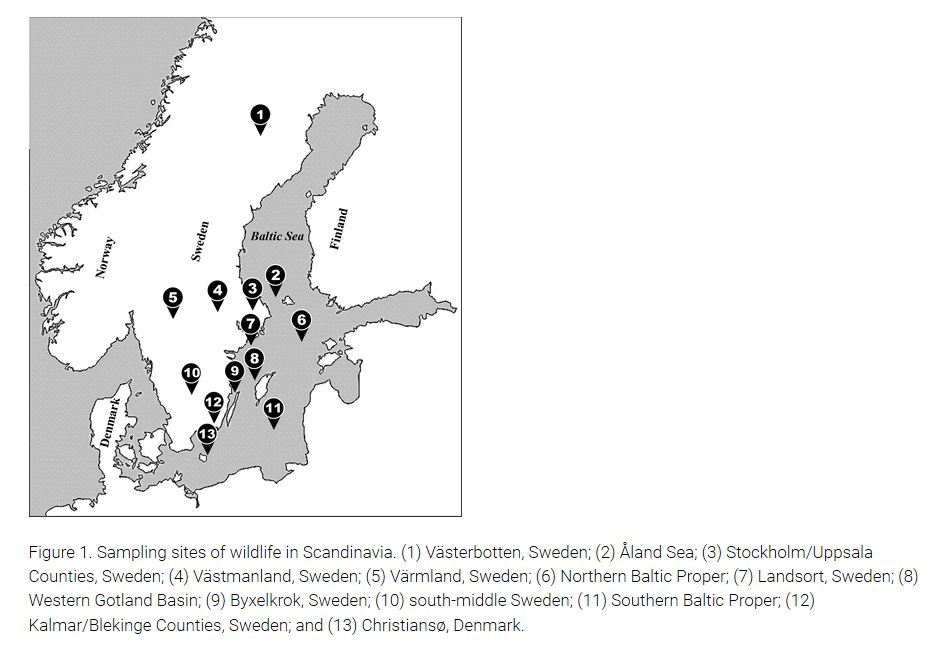Accumulation of Short-, Medium-, and Long-Chain Chlorinated Paraffins in Marine and Terrestrial Animals from Scandinavia
New publication by Bo Yuan, Katrin Vorkamp, Anna Maria Roos, Suzanne Faxneld, Christian Sonne, Svend Erik Garbus, Ylva Lind, Igor Eulaers, Peter Hellström, Rune Dietz, Sara Persson, Rossana Bossi, Cynthia A. de Wit

Abstract:
Short-, medium-, and long-chain chlorinated paraffins (SCCPs, MCCPs, and LCCPs) have a wide range of physical-chemical properties, indicating their varying bioaccumulation tendencies in marine and terrestrial ecosystems. However, there are few empirical data to reveal such bioaccumulation tendencies. In this study, we analyzed SCCPs, MCCPs, and LCCPs in samples from 18 species at both low and high trophic levels of marine and terrestrial ecosystems from the Scandinavian region collected during the past decade. These included fish, seabirds, marine mammals, and terrestrial birds and mammals. SCCPs, MCCPs, and LCCPs were present in all the species, with concentrations ranging from 26–1500, 30–1600, 6.0–1200 ng/g lipid, respectively. Although MCCPs and SCCPs predominated in most species, many terrestrial species had generally higher concentrations of LCCPs than marine species. Terrestrial raptors in particular accumulated higher concentrations of LCCPs, including C24/25—which are predominant among very-long-chain components. LCCP concentrations were highest and predominated (55% of total CPs) in peregrine falcons in this study, which is the first report where concentrations of LCCPs surpass those of SCCPs and MCCPs in wildlife. The results also indicate biomagnification of SCCPs, MCCPs, and LCCPs in both marine and terrestrial food chains, but in-depth studies of specific food webs are needed.
Environ. Sci. Technol.20195373526-3537,https://doi.org/10.1021/acs.est.8b06518
